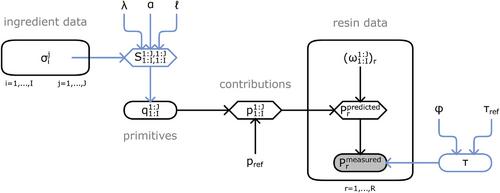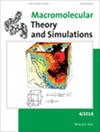通过统计学习确定聚酯材料的定量结构-性能关系
IF 1.8
4区 工程技术
Q3 POLYMER SCIENCE
引用次数: 0
摘要
我们利用统计学习提出了一个建立定量结构-性能关系(QSPR)的原则性框架。我们重点关注由多种试剂和不同分子量形成的工业聚合物的性质预测。我们开发了 QSPR 的理论描述以及用于吸收实验数据的严格数学方法。结果表明,我们的方法在建立聚酯玻璃化转变温度和固有粘度的 QSPR 方面表现优异。本文受版权保护。本文章由计算机程序翻译,如有差异,请以英文原文为准。

Quantitative Structure-Property Relations for Polyester Materials via Statistical Learning
Statistical learning is employed to present a principled framework for the establishment of quantitative structure-property relationships (QSPR). Property predictions of industrial polymers formed by multiple reagents and at varying molecular weights are focused. A theoretical description of QSPR as well as a rigorous mathematical method is developed for the assimilation of experimental data. Results show that these methods can perform exceptionally well at establishing QSPR for glass transition temperature and intrinsic viscosity of polyesters.
求助全文
通过发布文献求助,成功后即可免费获取论文全文。
去求助
来源期刊

Macromolecular Theory and Simulations
工程技术-高分子科学
CiteScore
3.00
自引率
14.30%
发文量
45
审稿时长
2 months
期刊介绍:
Macromolecular Theory and Simulations is the only high-quality polymer science journal dedicated exclusively to theory and simulations, covering all aspects from macromolecular theory to advanced computer simulation techniques.
 求助内容:
求助内容: 应助结果提醒方式:
应助结果提醒方式:


